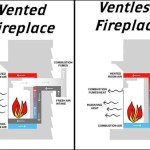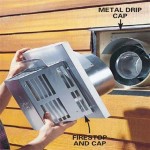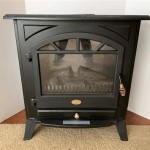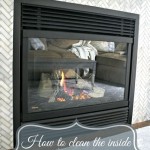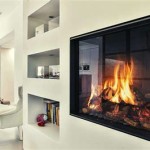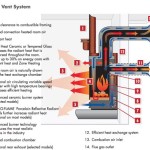Cleaning Soot Off Gas Fireplace Logs: A Comprehensive Guide
Gas fireplaces offer a convenient and aesthetically pleasing alternative to traditional wood-burning fireplaces. They provide warmth and ambience with minimal effort. However, the combustion process, even with natural gas or propane, inevitably produces soot. This soot accumulates on the artificial logs, diminishing their realistic appearance and potentially affecting the fireplace's efficiency over time. Understanding the nature of soot and implementing a proper cleaning routine are crucial for maintaining the longevity and visual appeal of a gas fireplace.
Soot is a byproduct of incomplete combustion. It consists primarily of carbon particles, along with other substances such as ash and unburnt hydrocarbons. In a gas fireplace, incomplete combustion can occur due to several factors, including improper air-to-fuel ratio, clogged burner ports, and inadequate ventilation. While gas fireplaces are designed to burn fuel cleanly, small amounts of soot are still produced. Over time, this soot adheres to the porous surface of the artificial logs, causing them to appear blackened and dull.
The composition of artificial logs varies depending on the manufacturer, but they often consist of refractory ceramic materials, such as ceramic fibers or molded ceramic aggregates. These materials are chosen for their ability to withstand high temperatures and mimic the appearance of real wood. However, their porous nature makes them susceptible to soot absorption. Furthermore, some logs may be coated with a decorative finish that can be damaged by harsh cleaning agents.
Regular cleaning is essential not only for aesthetic reasons but also for maintaining the proper functioning of the gas fireplace. Excessive soot buildup can obstruct burner ports, leading to inefficient combustion, increased gas consumption, and potentially hazardous carbon monoxide production. Additionally, soot can flake off and circulate into the room, contributing to indoor air pollution. Therefore, a proactive cleaning schedule is recommended, ideally once or twice per year, depending on the frequency of fireplace use.
Key Point 1: Identifying the Problem and Tools Required
Before embarking on the cleaning process, a thorough inspection of the gas fireplace is necessary. Observe the extent of soot accumulation on the logs and other components, such as the burner and firebox. Note any signs of damage, such as cracks or chips in the logs, which may require repair or replacement. Identifying the severity of the soot buildup will help determine the appropriate cleaning method and tools.
Gathering the necessary tools is the next crucial step. The following items are generally required for cleaning gas fireplace logs:
- Soft-bristled brush: A soft-bristled brush, such as a toothbrush or a small detailing brush, is ideal for gently removing loose soot and debris from the surface of the logs. Avoid using abrasive brushes, as they can scratch or damage the log's finish.
- Vacuum cleaner with a brush attachment: A vacuum cleaner with a brush attachment is useful for removing larger particles of soot and dust from the firebox and surrounding areas.
- Mild detergent: A mild detergent, such as dish soap or a specialized fireplace cleaner, can be used to loosen stubborn soot deposits. Ensure that the detergent is compatible with the log material and does not contain harsh chemicals that could damage the finish.
- Warm water: Warm water is used to dilute the detergent and rinse the logs after cleaning.
- Spray bottle: A spray bottle is helpful for applying the cleaning solution evenly to the logs.
- Soft cloths or sponges: Soft cloths or sponges are used to wipe the logs and remove the cleaning solution.
- Protective gloves: Protective gloves are recommended to protect the hands from soot and cleaning solutions.
- Drop cloths or newspaper: Drop cloths or newspaper should be placed around the fireplace to protect the surrounding area from spills and debris.
It is also important to consult the manufacturer's instructions for the specific gas fireplace model, as they may provide specific recommendations for cleaning and maintenance. Adhering to the manufacturer's guidelines will help ensure that the cleaning process is safe and effective.
Key Point 2: The Cleaning Procedure
Once the necessary tools and materials have been gathered, the cleaning procedure can commence. It is important to follow these steps carefully to avoid damaging the logs or the fireplace.
- Safety Precautions: Before starting, ensure that the gas supply to the fireplace is turned off. This is a critical safety measure to prevent accidental gas leaks or explosions. Allow the fireplace to cool completely before handling the logs.
- Preparation: Place drop cloths or newspaper around the fireplace to protect the surrounding area. Remove the logs from the firebox and place them on a protected surface.
- Dry Cleaning: Use a soft-bristled brush to gently remove loose soot and debris from the surface of the logs. Work in small sections and avoid applying excessive pressure. Vacuum the firebox and surrounding areas with a brush attachment to remove any remaining soot and dust.
- Wet Cleaning (if necessary): If the soot is particularly stubborn, a mild detergent solution can be used. Mix a small amount of detergent with warm water in a spray bottle. Lightly spray the solution onto the affected areas of the logs. Allow the solution to sit for a few minutes to loosen the soot.
- Wiping and Rinsing: Use a soft cloth or sponge to gently wipe the logs and remove the cleaning solution. Rinse the logs thoroughly with clean water to remove any remaining detergent residue. Ensure that all traces of the cleaning solution are removed, as residue can affect the fireplace's performance.
- Drying: Allow the logs to air dry completely before replacing them in the firebox. This may take several hours, depending on the humidity and temperature. Avoid using a hairdryer or other heat source to speed up the drying process, as this can damage the logs.
- Reassembly: Once the logs are completely dry, carefully replace them in the firebox according to the manufacturer's instructions. Ensure that the logs are positioned correctly to allow for proper gas flow and combustion.
For particularly stubborn soot deposits, a specialized fireplace cleaner may be required. However, it is essential to choose a cleaner that is specifically designed for gas fireplace logs and is compatible with the log material. Always follow the manufacturer's instructions for the cleaner carefully.
Key Point 3: Prevention and Maintenance
Preventing soot buildup is more effective than constantly cleaning. Regular maintenance and adherence to best practices can significantly reduce soot accumulation and prolong the life of the gas fireplace logs.
- Regular Inspections: Inspect the gas fireplace regularly for signs of soot buildup, burner port blockage, or other issues. Addressing these problems early can prevent them from escalating.
- Burner Maintenance: Periodically clean the burner ports to ensure proper gas flow and combustion. Use a small brush or compressed air to remove any debris or obstructions.
- Proper Ventilation: Ensure that the gas fireplace is properly ventilated. Inadequate ventilation can lead to incomplete combustion and increased soot production.
- Professional Servicing: Schedule regular professional servicing for the gas fireplace. A qualified technician can inspect the system, clean the components, and identify any potential problems.
- Log Placement: Ensure the logs are positioned correctly according to the manufacturer's instructions. Incorrect placement can obstruct burner ports and lead to incomplete combustion.
- Fuel Quality: Use natural gas or propane of high quality. Impurities in the fuel can contribute to soot production.
Maintaining the gas fireplace is crucial for safe and efficient operation. Regular cleaning, inspection, and professional servicing will help prevent soot buildup, extend the life of the logs, and ensure that the fireplace provides years of reliable warmth and ambience.
In situations where the artificial logs are severely damaged or cannot be adequately cleaned, replacement may be necessary. When selecting replacement logs, it is important to choose logs that are compatible with the gas fireplace model and that meet safety standards. Consult with a qualified technician to ensure that the replacement logs are installed correctly.
The information provided in this article serves as a general guide. Specific cleaning and maintenance procedures may vary depending on the gas fireplace model and the type of artificial logs used. Always refer to the manufacturer's instructions for detailed guidance. By following these steps and implementing a proactive maintenance schedule, the aesthetic appeal and functionality of the gas fireplace can be preserved for years to come.

How To Clean Soot From A Gas Log Set Full Service Chimney

How To Clean Gas Logs 10 Steps With S Wikihow

How To Clean Gas Logs 10 Steps With S Wikihow

How To Gas Log Cleaning Blog Fireplace And Chimney Authority

Why Is It Important To Get My Gas Fireplace Logs Clean Regularly

How To Clean Soot From A Gas Log Set Full Service Chimney

How To Clean Soot From A Gas Log Set Full Service Chimney

How To Clean Soot From A Gas Log Set Full Service Chimney

Log Bright Gas Soot Remover Rutland

How To Clean Gas Fireplace Logs Steps The Flame Company
Related Posts

